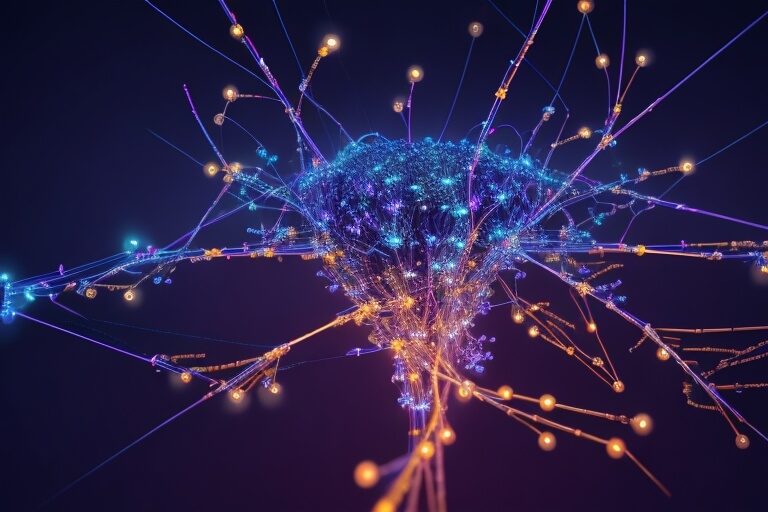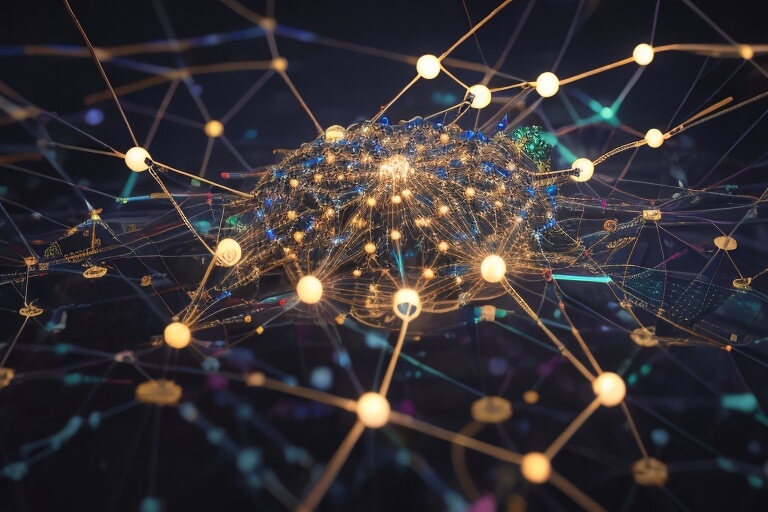In today’s rapidly evolving landscape of artificial intelligence and deep learning, Generative Adversarial Networks (GANs) have emerged as a potent tool for generating realistic data, spanning from lifelike images of animals to coherent text mimicking human writing. GANs belong to a distinct class of machine learning models conceptualized by Ian Goodfellow and his research colleagues back in 2014. Since their inception, GANs have found applications in various domains, from the creative realms of image generation, where you can create realistic images of non-existent celebrities, to the pragmatic world of drug discovery, where they can assist in the generation of molecular structures.
Generative Adversarial Networks (GANs) are a unique paradigm in machine learning, comprising two neural networks: the generator and the discriminator. These networks are engaged in a perpetual game of one-upmanship.
 Imagine the generator as an art forger. The generator network’s primary mission is to craft data that closely resembles a target dataset. It takes random noise as input and, through a series of intricate transformations, shapes it into data that should be nearly indistinguishable from real-world data. This transformation process typically involves layers of deconvolutional (transpose convolutional) operations and activation functions, progressively generating data of increasing complexity and detail.
Imagine the generator as an art forger. The generator network’s primary mission is to craft data that closely resembles a target dataset. It takes random noise as input and, through a series of intricate transformations, shapes it into data that should be nearly indistinguishable from real-world data. This transformation process typically involves layers of deconvolutional (transpose convolutional) operations and activation functions, progressively generating data of increasing complexity and detail.
For instance, in the domain of image generation, a GAN’s generator could take random noise as input and produce images of imaginary landscapes, or even animals that look like they could exist in the real world. This is achieved by progressively refining the generated images to include finer details and realism.
In the context of TensorFlow and Keras, implementing the generator can be accomplished using either the Sequential or Functional API. Here, you can meticulously design the architecture by adding layers such as Dense, Conv2DTranspose, and BatchNormalization to facilitate the data transformation process.
The discriminator, on the other hand, plays the role of an art critic. In this analogy, the discriminator’s sole purpose is to scrutinize incoming data and decipher whether it originates from the real dataset or is merely an ingenious counterfeit crafted by the generator. In essence, the discriminator operates as a binary classifier, rigorously trained to provide feedback to the generator regarding the veracity of its generated data.
Suppose we’re generating text using a GAN. The discriminator, in this context, would assess whether a piece of text is human-written or generated by the model. It examines the nuances of language, context, and coherence to make this determination.
The implementation of the discriminator in TensorFlow and Keras parallels that of the generator, albeit with a distinct objective. It also involves defining a neural network, but this network is trained to make binary distinctions, leveraging layers such as Conv2D, Flatten, and Dense to sharpen its discernment skills.
Building a GAN Model
The GAN architecture orchestrates a delicate interplay between the generator and discriminator, resulting in a synergistic whole that is more powerful than its parts. While the generator and discriminator are both trained, the generator’s ultimate ambition is to outwit the discriminator by crafting counterfeit data that is so convincing that it is virtually indistinguishable from real data. In contrast, the discriminator strives to adeptly distinguish authentic data from the cleverly crafted forgeries.
For example, generating photorealistic human faces. The generator starts by producing crude, blurry images, while the discriminator becomes more discerning over time. As training progresses, the generator learns to create faces with finer details, such as realistic eyes, noses, and expressions. The discriminator, in response, becomes better at spotting even the subtlest discrepancies between real and generated faces.
In TensorFlow and Keras, you construct a GAN model by sequentially connecting the generator and discriminator. Within this framework, you define the loss functions, optimizers, and training loops with meticulous precision. This adversarial configuration forces both networks to continually improve over time, culminating in a generator capable of producing data that exhibits an increasingly remarkable semblance to reality.
Training and Fine-Tuning the GAN
Mode collapse is a common challenge in GAN training. It occurs when the generator focuses on producing a limited range of outputs, ignoring the diversity present in the training data. Imagine training a GAN to generate different styles of houses but ending up with only one specific style.
 To combat mode collapse, techniques such as mini-batch discrimination and using more complex architectures for both the generator and discriminator have been proposed. These methods encourage the generator to explore a broader range of possibilities during training.
To combat mode collapse, techniques such as mini-batch discrimination and using more complex architectures for both the generator and discriminator have been proposed. These methods encourage the generator to explore a broader range of possibilities during training.
GANs often suffer from vanishing gradients, which hinders the training process. As the discriminator becomes more proficient, it can provide strong feedback to the generator, causing its gradients to vanish, stalling learning.
To address this, alternative loss functions like the Wasserstein loss and gradient penalty have been introduced. These approaches provide more stable gradients and mitigate the vanishing gradient problem, leading to improved training.
Training instability is a related issue, where the generator and discriminator struggle to find an equilibrium. This can result in erratic convergence behavior, making it challenging to determine when to stop training.
Strategies like adjusting learning rates dynamically and employing different update schedules for the generator and discriminator can enhance training stability. Additionally, advanced GAN variants, such as ProGAN and StyleGAN, have been designed with stability in mind and have yielded impressive results in image generation tasks.
As you progress in your GAN implementation, it’s crucial to have robust methods for evaluating the performance of your model. Metrics such as Inception Score, Frechet Inception Distance (FID), and Precision and Recall are valuable tools for assessing the quality of generated data and the diversity of outputs.
Consider exploring techniques like progressive growing of GANs (PGGANs) to generate high-resolution images progressively, or conditional GANs (cGANs) that allow you to control specific attributes of the generated data. For instance, in the context of image generation, you could create a conditional GAN that generates images of different types of cars based on specific input conditions such as the car’s color, size, or style.